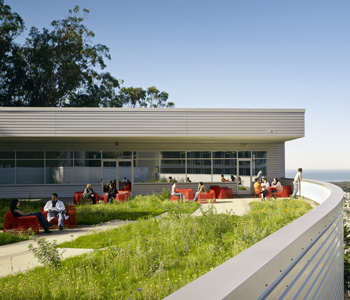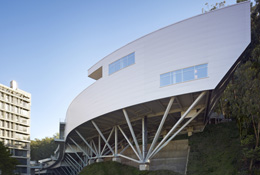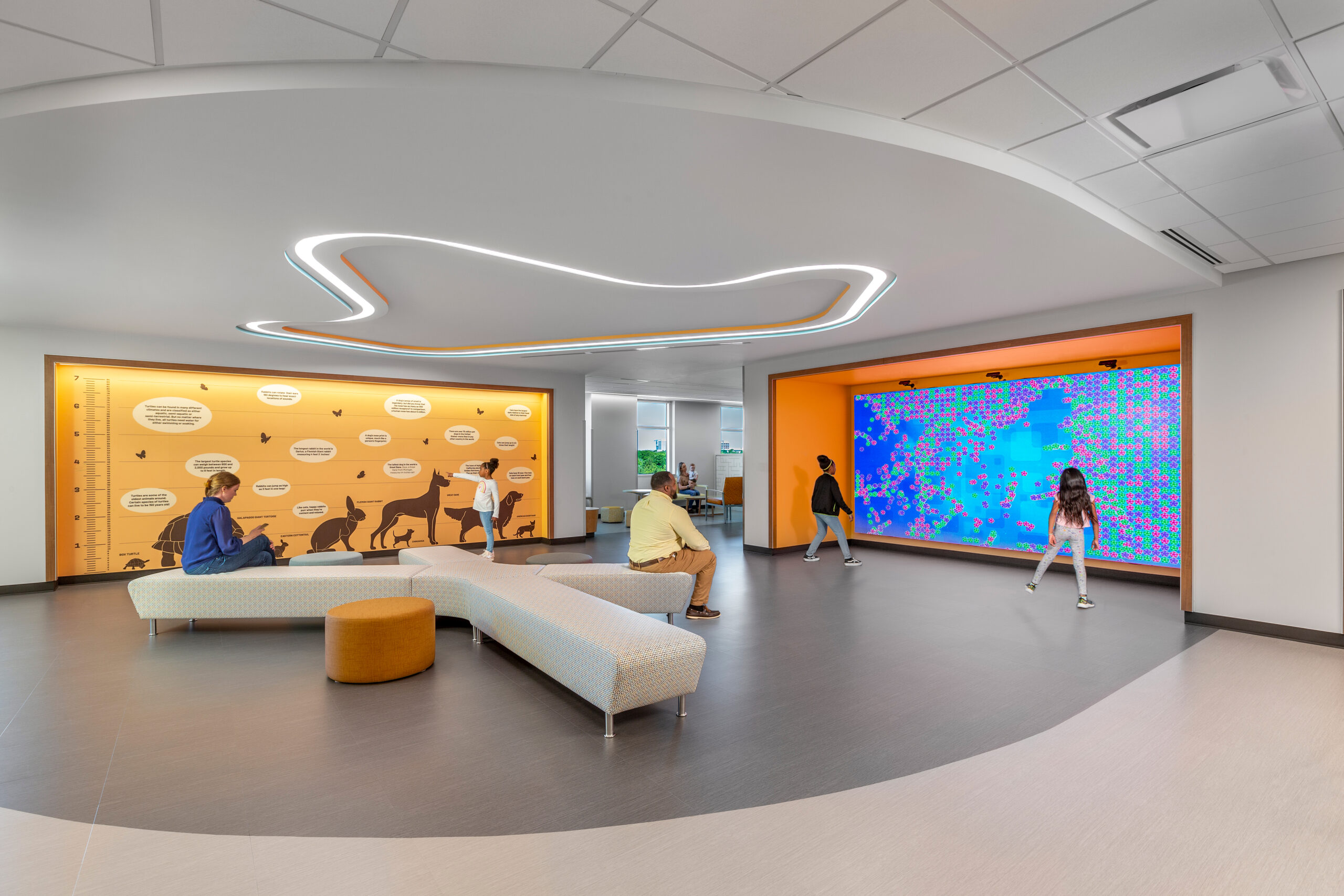
SAN FRANCISCO — The design/build team of DPR Construction, SmithGroup and Forell/Elsesser Engineers has completed construction of the Ray and Dagmar Dolby Regeneration Medicine Building for the University of California, San Francisco (UCSF).
Rafael Viñoly Architects of New York City and structural engineer Nabih Youssef & Associates of San Francisco provided schematic architectural design on the project.
Located on a hillside on the university’s Parnassus campus, the new $123 million building houses the Eli and Edythe Broad Center of Regeneration Medicine and Stem Cell Research. The facility is considered a significant step forward in UCSF’s stem cell research program.
 The 660-foot-long building sits on a structural framework 40 to 70 feet off the ground and features base isolators that allow 23 inches of lateral movement during earthquakes. It is targeting LEED Gold certification.
The 660-foot-long building sits on a structural framework 40 to 70 feet off the ground and features base isolators that allow 23 inches of lateral movement during earthquakes. It is targeting LEED Gold certification.The design/build team was awarded the design and construction of the facility in mid-2008 with a mandate to achieve beneficial occupancy within two years.
DPR, SmithGroup and Forell/Elsesser used Integrated Project Delivery (IPD), a collaborative process praised for its ability to reduce waste and maximize efficiency, to speed up the project. University representatives provided input and feedback during construction.
“This process produced an intensely innovative, fluid, and rapid response to a string of seemingly insurmountable challenges,” said SmithGroup project manager Marianne O’Brien. “The investment of each team member shows in the execution of every detail and the overall result.”
The team cut project costs while preserving the original purpose of the design by reclassifying the building from a hazardous occupancy to a business occupancy by applying the newly adopted building code. It also removed a mechanical level originally designed to hang from the underside of the building and embedded it into the office level, eliminating fire and smoke dampers and increasing the net to gross square foot ratio.
In addition, the team redesigned the superstructure of the building to include additional vertical columns to reduce shoring and keep the project on schedule. The original design required expensive “falsework” that would have interfered with the scheduling of other construction work.
“The Regeneration Medicine building is a current, real-world example of how value is being increased and design enhanced through a collaborative team effort,” said Gavin Keith, DPR’s project executive for the building. “The entire team had a single-minded focus on delivering the best possible result to the university, given the complexities of the site, budget and schedule.”





